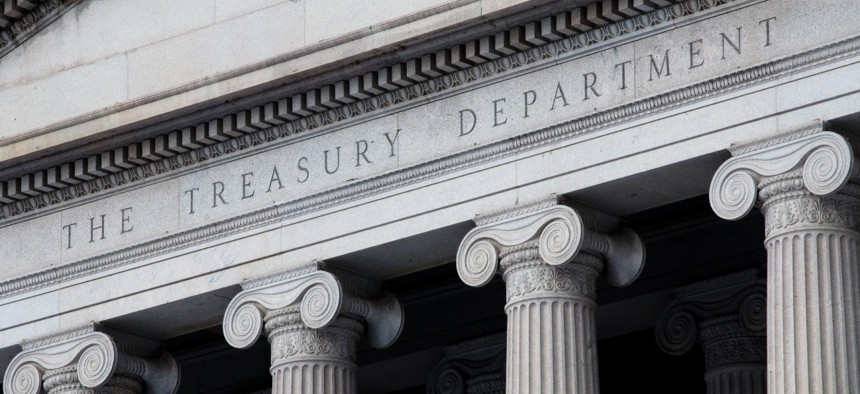
USPS should have a mix of short-, medium- and long-term securities, the IG said. rrodrickbeiler / Getty Images
The USPS Is Leaving Money on the Table With a Poor Investment Strategy, IG Says
The current approach is also leaving the Postal Service vulnerable to unnecessary risk, the watchdog found.
The Postal Service would benefit from taking a longer-term approach when investing its cash on hand, the agency’s inspector general said in a new report, clashing with agency leadership over the best approach for its growing reserve of funds.
The Postal Service ended fiscal 2022 with $19.6 billion in cash, up from $2.3 billion in fiscal 2013. That growth, made possible by improving revenue, a postal reform bill and a cash infusion from Congress, has made it more pressing for USPS to maximize its investment approach, the agency’s watchdog found. Postmaster General Louis DeJoy has launched his Delivering for America plan for the agency to get out of the red by 2030, but the IG said postal management is hurting its capacity to do so by making riskier, less predictable investments.
USPS has historically only invested its excess cash in overnight treasuries. While such short-term investments are particularly vulnerable to interest rate changes, it offers a highly liquid option for the agency. Additionally, due to the current high interest rates and the possibility of a recession, short-term treasuries currently offer higher yields than normal. The IG argued, however, that USPS should not count on that being the case in the long term.
“As the economic outlook stabilizes and interest rates plateau, it would be advantageous for the Postal Service to diversify its cash investment portfolio by investing in longer-term securities,” the auditors said. “This investment approach would greatly reduce its risk profile while generating more predictable returns on its cash to complement the initiatives” DeJoy hopes to implement in the coming years.
In September, the agency struck an agreement with the Treasury Department to invest in longer-term treasuries of up to two years. USPS has yet to fully take advantage of that authority, the IG said in encouraging the agency to push for an even lengthier investment horizon.
In a worst-case scenario, the IG found USPS could lose between $3 billion and $4 billion in its current approach versus investing in longer-term securities. In the best-case scenarios USPS comes out ahead with overnight securities, but the IG stressed that managing cash for future capital investment “should not be driven by the low probability of good outcomes.” In the median scenarios, USPS is in a stronger position with longer-term investments.
While USPS is planning to draw on its cash reserves to make DeJoy’s scheduled capital investments in things like its vehicle fleet, facility acquisition and improvement and workforce reforms, the IG found USPS would increase its return, significantly reduce risk and continue to have funds available to pay for those projects through a mix of short-, medium- and long-term securities.
“Investing cash in longer-term treasuries enables the Postal Service to continue to meet current operational requirements and maintain funds to respond to changes in the business environment,” the IG said, adding the approach would “complement the initiatives in its [Delivering for America] plan.”
Joseph Corbett, the Postal Service’s chief financial officer, said in response to the report he does not currently have the ability to invest in treasuries longer than two years.
“We lack the authority you suggest we exercise,” Corbett said.
Still, the IG called on USPS to work with the Treasury Department on a new agreement that would allow for the longer-term investments. It also said postal management should work with Treasury to obtain more favorable conditions for borrowing money. Corbett countered that rising interest rates make short-term treasuries the best option and that USPS would become too illiquid to meet all of its upcoming payments. The IG noted it accounted for all planned capital investments and debt repayments USPS included in its 10-year plan and it would still benefit from changing strategies.







